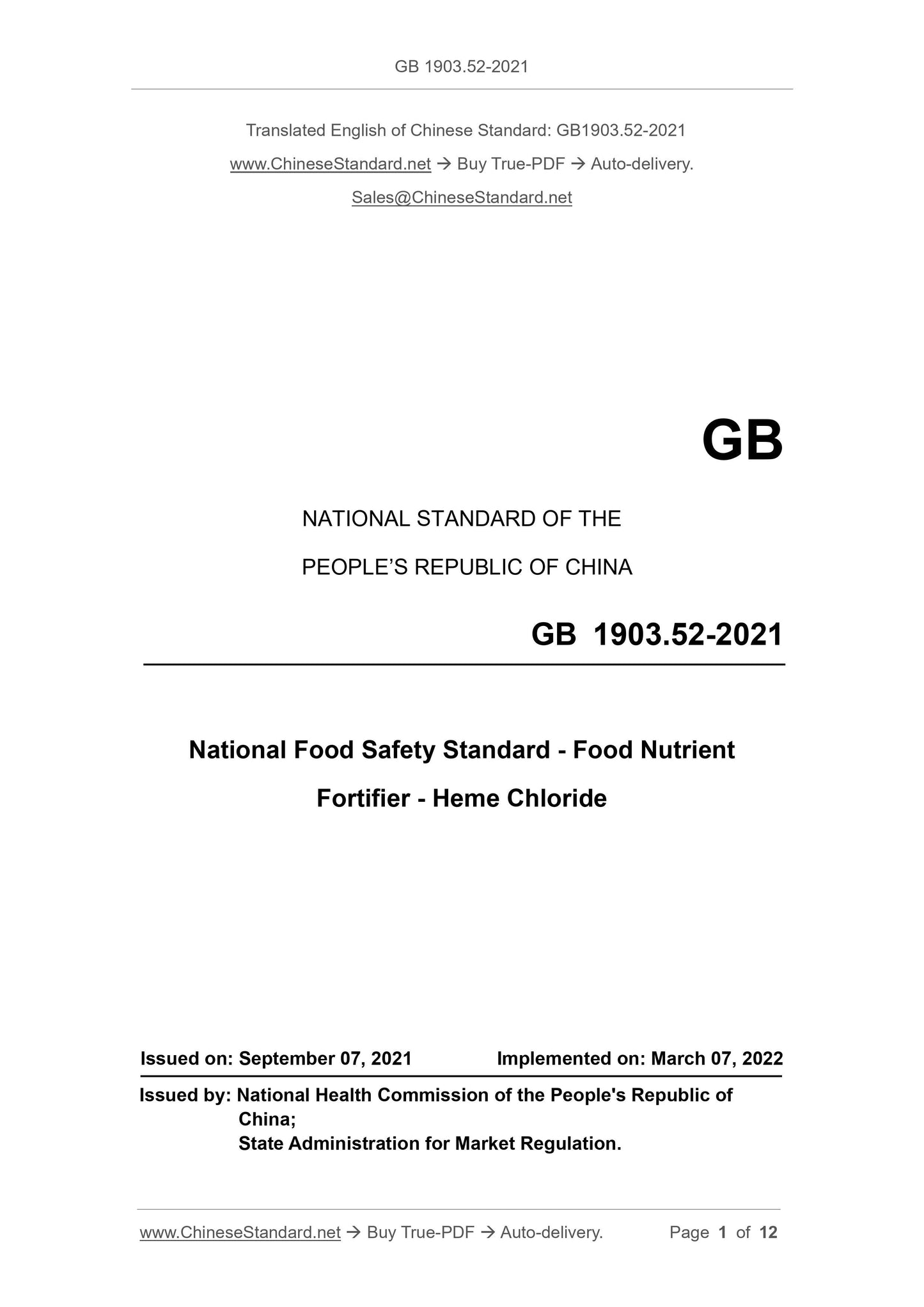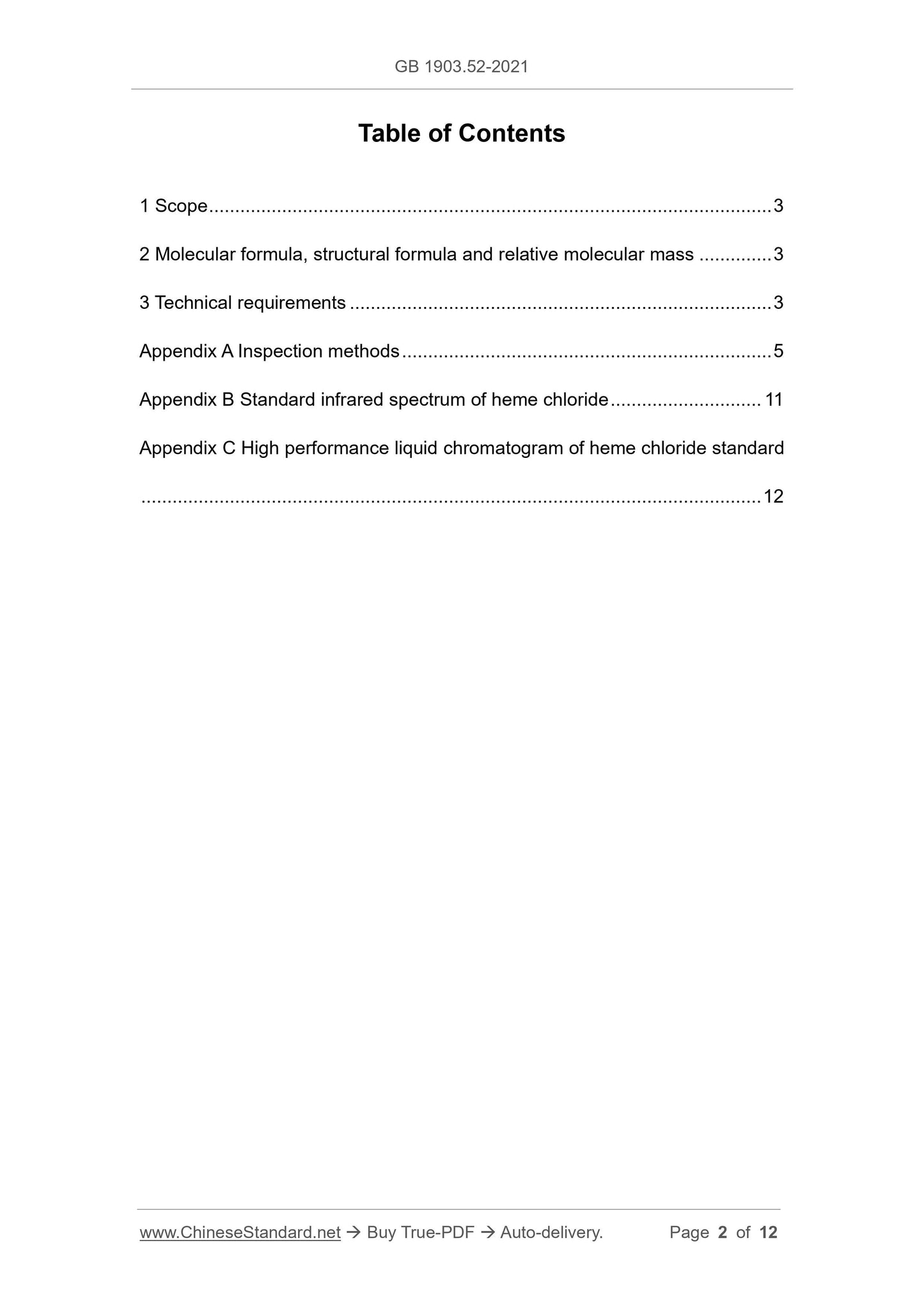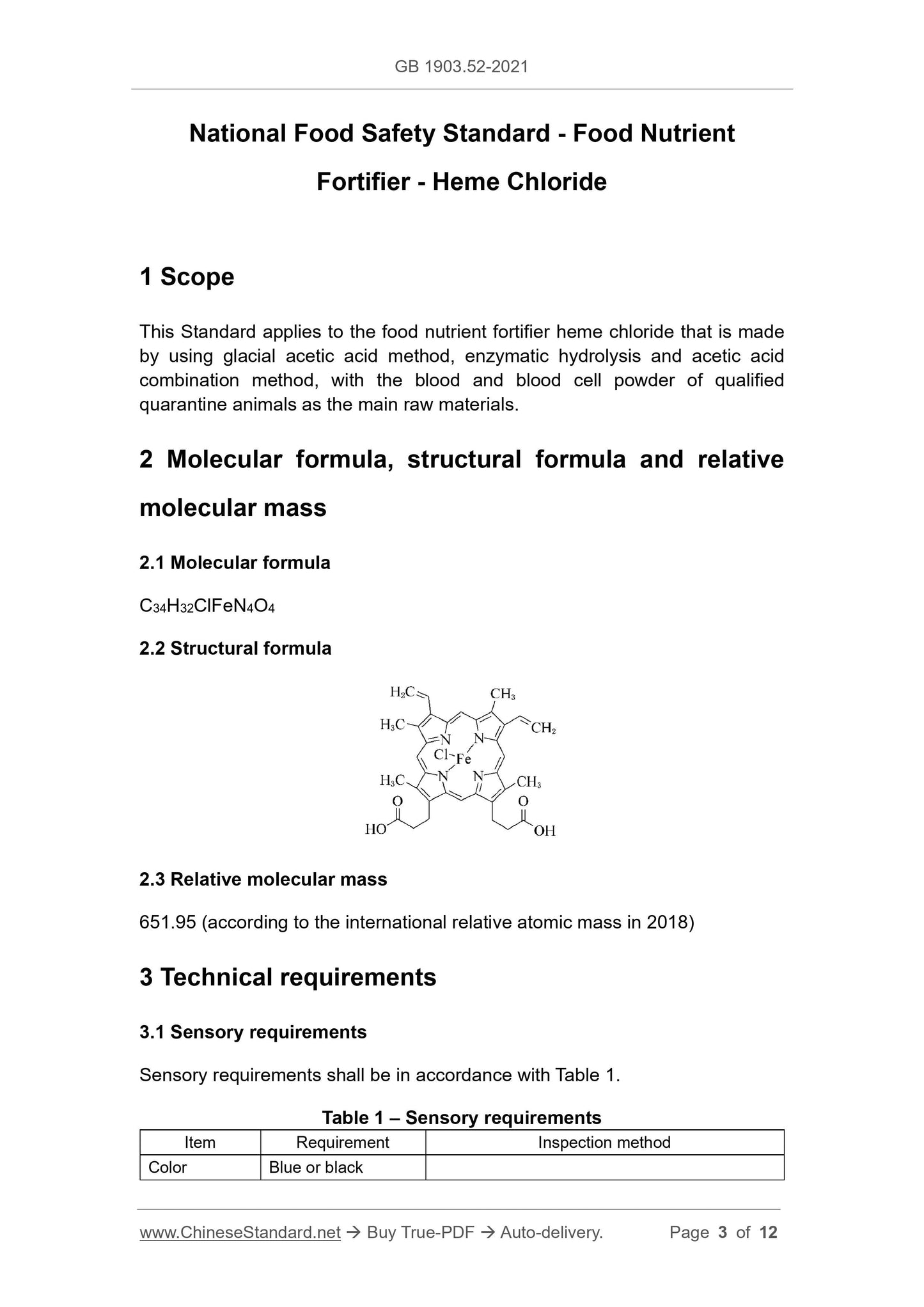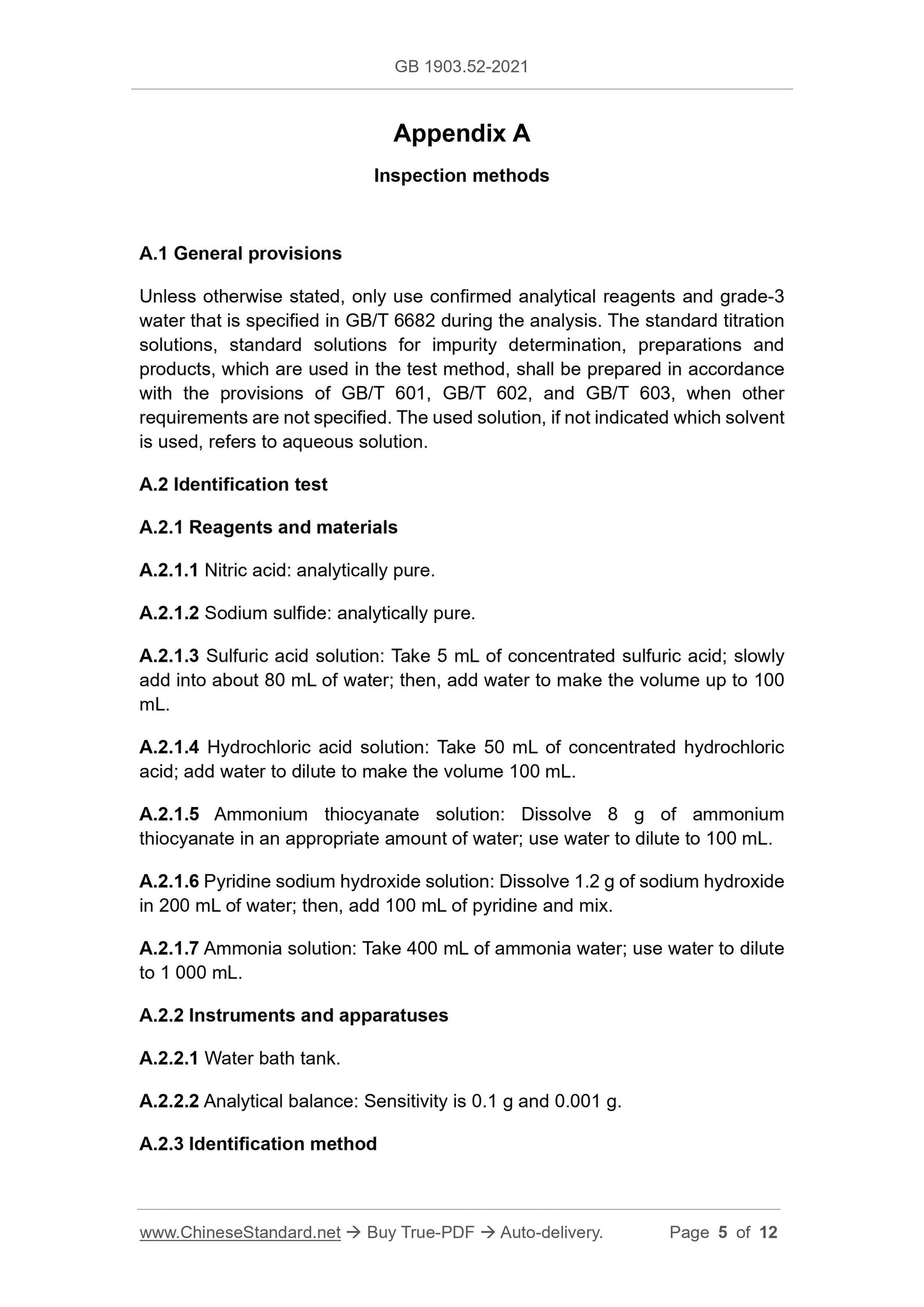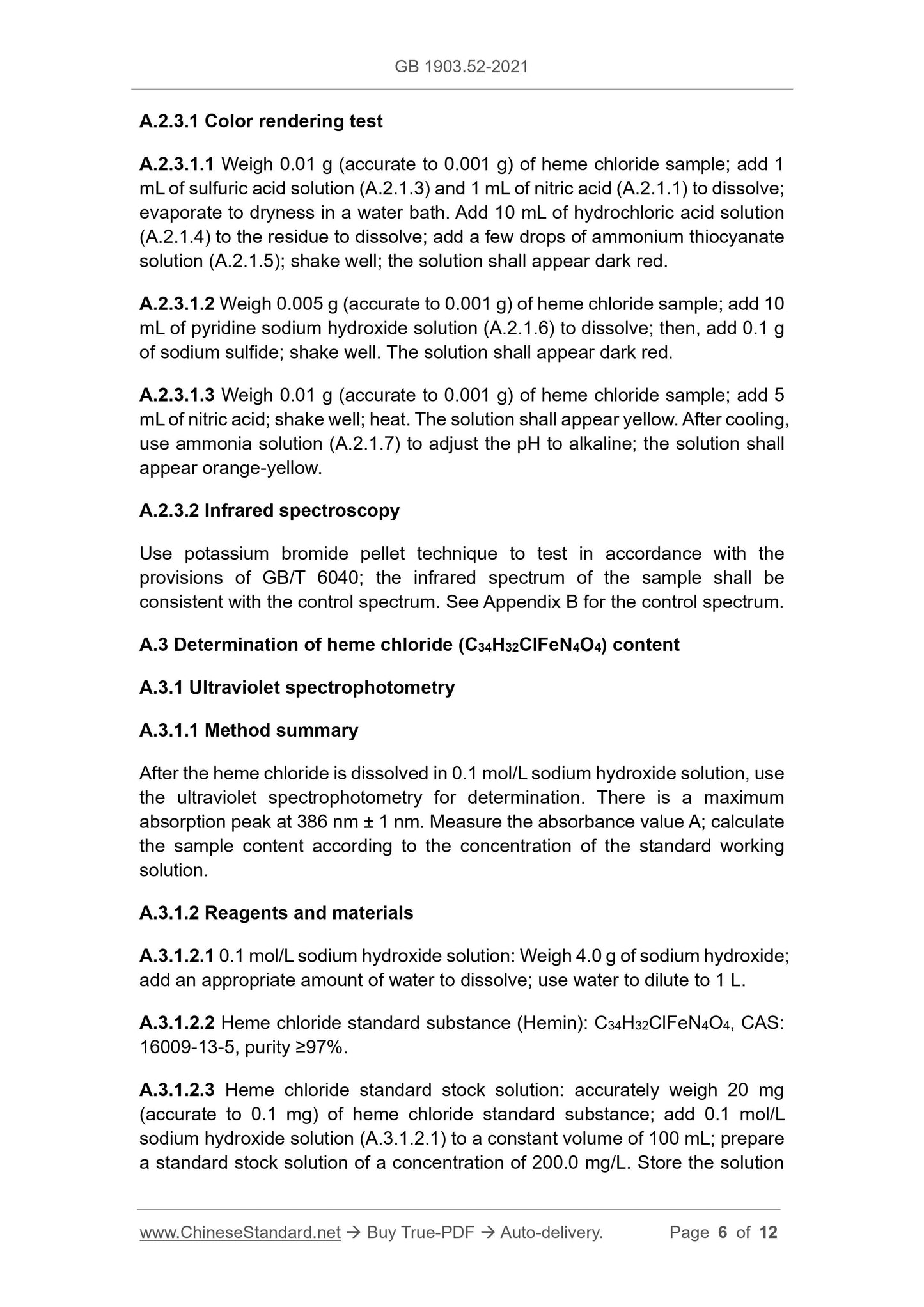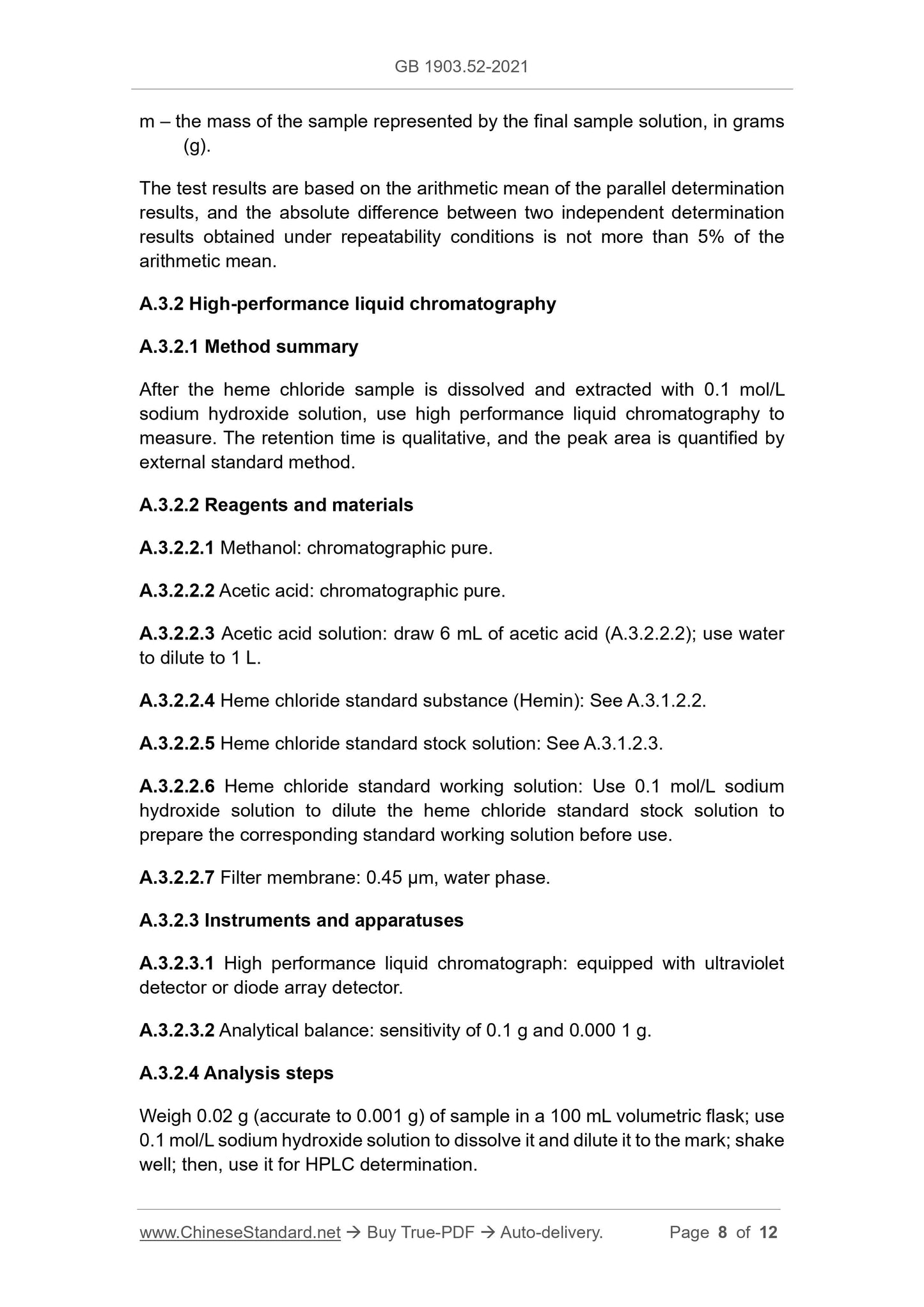1
/
of
6
www.ChineseStandard.us -- Field Test Asia Pte. Ltd.
GB 1903.52-2021 English PDF
GB 1903.52-2021 English PDF
Regular price
$170.00
Regular price
Sale price
$170.00
Unit price
/
per
Shipping calculated at checkout.
Couldn't load pickup availability
GB 1903.52-2021: National food safety standard - Food Nutrient Fortifier - Heme Chloride
Delivery: 9 seconds. Download (and Email) true-PDF + Invoice.Get Quotation: Click GB 1903.52-2021 (Self-service in 1-minute)
Newer / historical versions: GB 1903.52-2021
Preview True-PDF
Scope
This Standard applies to the food nutrient fortifier heme chloride that is madeby using glacial acetic acid method, enzymatic hydrolysis and acetic acid
combination method, with the blood and blood cell powder of qualified
quarantine animals as the main raw materials.
Basic Data
| Standard ID | GB 1903.52-2021 (GB1903.52-2021) |
| Description (Translated English) | National food safety standard - Food Nutrient Fortifier - Heme Chloride |
| Sector / Industry | National Standard |
| Classification of Chinese Standard | X09 |
| Word Count Estimation | 10,123 |
| Issuing agency(ies) | National Health Commission of the People's Republic of China, State Administration for Market Regulation |
Share
